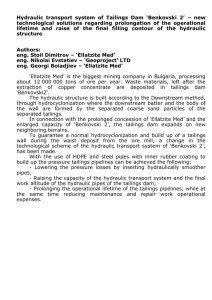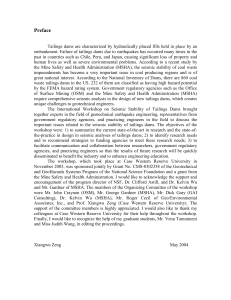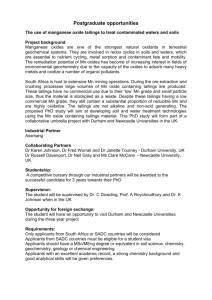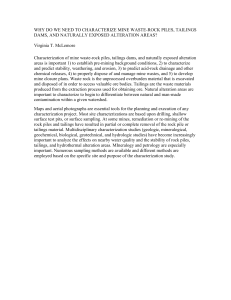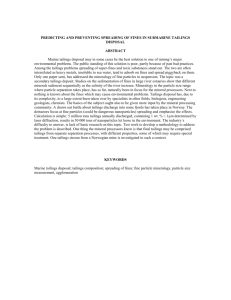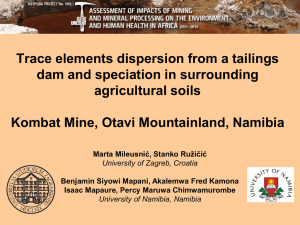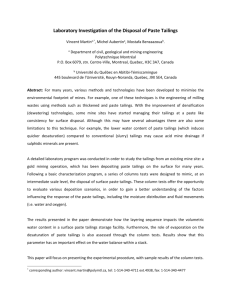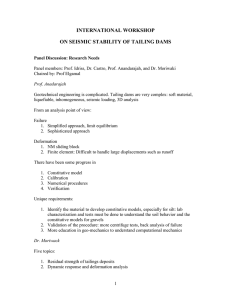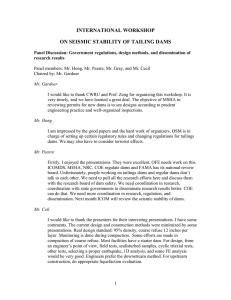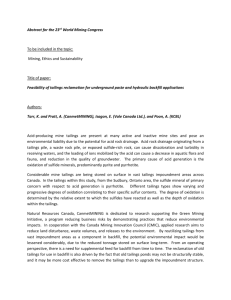Challenges at the Zelazny most copper tailings disposal facility
advertisement
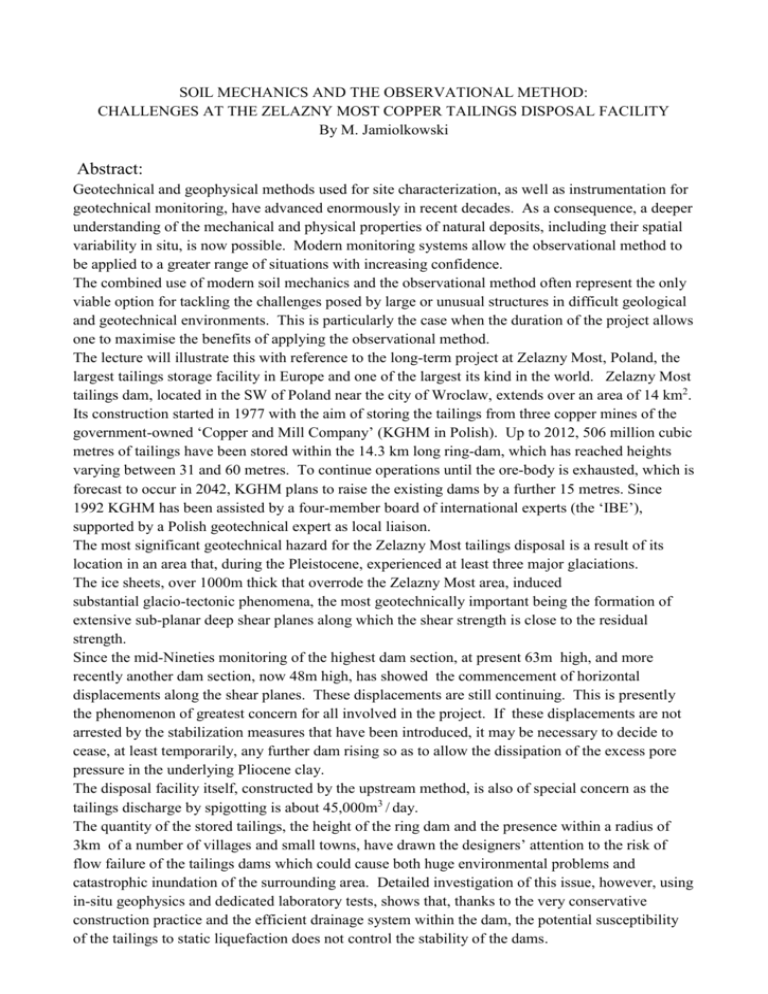
SOIL MECHANICS AND THE OBSERVATIONAL METHOD: CHALLENGES AT THE ZELAZNY MOST COPPER TAILINGS DISPOSAL FACILITY By M. Jamiolkowski Abstract: Geotechnical and geophysical methods used for site characterization, as well as instrumentation for geotechnical monitoring, have advanced enormously in recent decades. As a consequence, a deeper understanding of the mechanical and physical properties of natural deposits, including their spatial variability in situ, is now possible. Modern monitoring systems allow the observational method to be applied to a greater range of situations with increasing confidence. The combined use of modern soil mechanics and the observational method often represent the only viable option for tackling the challenges posed by large or unusual structures in difficult geological and geotechnical environments. This is particularly the case when the duration of the project allows one to maximise the benefits of applying the observational method. The lecture will illustrate this with reference to the long-term project at Zelazny Most, Poland, the largest tailings storage facility in Europe and one of the largest its kind in the world. Zelazny Most tailings dam, located in the SW of Poland near the city of Wroclaw, extends over an area of 14 km2. Its construction started in 1977 with the aim of storing the tailings from three copper mines of the government-owned ‘Copper and Mill Company’ (KGHM in Polish). Up to 2012, 506 million cubic metres of tailings have been stored within the 14.3 km long ring-dam, which has reached heights varying between 31 and 60 metres. To continue operations until the ore-body is exhausted, which is forecast to occur in 2042, KGHM plans to raise the existing dams by a further 15 metres. Since 1992 KGHM has been assisted by a four-member board of international experts (the ‘IBE’), supported by a Polish geotechnical expert as local liaison. The most significant geotechnical hazard for the Zelazny Most tailings disposal is a result of its location in an area that, during the Pleistocene, experienced at least three major glaciations. The ice sheets, over 1000m thick that overrode the Zelazny Most area, induced substantial glacio-tectonic phenomena, the most geotechnically important being the formation of extensive sub-planar deep shear planes along which the shear strength is close to the residual strength. Since the mid-Nineties monitoring of the highest dam section, at present 63m high, and more recently another dam section, now 48m high, has showed the commencement of horizontal displacements along the shear planes. These displacements are still continuing. This is presently the phenomenon of greatest concern for all involved in the project. If these displacements are not arrested by the stabilization measures that have been introduced, it may be necessary to decide to cease, at least temporarily, any further dam rising so as to allow the dissipation of the excess pore pressure in the underlying Pliocene clay. The disposal facility itself, constructed by the upstream method, is also of special concern as the tailings discharge by spigotting is about 45,000m3 / day. The quantity of the stored tailings, the height of the ring dam and the presence within a radius of 3km of a number of villages and small towns, have drawn the designers’ attention to the risk of flow failure of the tailings dams which could cause both huge environmental problems and catastrophic inundation of the surrounding area. Detailed investigation of this issue, however, using in-situ geophysics and dedicated laboratory tests, shows that, thanks to the very conservative construction practice and the efficient drainage system within the dam, the potential susceptibility of the tailings to static liquefaction does not control the stability of the dams.
